#brehon
Explore tagged Tumblr posts
Text
youtube
The Last Druid - Documentary on Ben McBrady of The Old Gaelic Order
Maoleachlain
I came across this video wondering how shamanic practices involving hallucinogenic fungi came to be so much a part of Christmastime mythology. The video has nothing on that topic, but gave me some threads to pull for understanding Druids a bit.
My brother mentioned that former Archbishop of Canterbury, Rowan Williams is a White Druid. I had no idea. Reading about it I was impressed that William's response to Evangelical criticism of his honorific was essentially: Oh bugger off.
This Wikipedia article, Brehon, impressed me. I got to the article searching for Ben McBrady, and here's the link to an article citing McBrady from the Wikipedia article. Brehon is a system of judicial mediation which has quite ancient roots.
Something which is so powerful about prison Abolitionists is their cultivation of approaches and methods that make the kind of future they want. That approach opens up a wide world of possibilities. Reading the Turtle Talk blog has help me to see there are deep precedents in the indigenous cultures of the Americas.
Linda Tuhiwai Smith is a Maori scholar of decolonizing methods. She observes:
Indigenous people have this culture, have this knowledge, and have ways of doing things. And it is the same around the world: there are other ways of imagining ourselves. And that is really important when we think about the contribution that Indigenous people and indigeneity can bring.
I have enjoyed reading John Michael Greer, who is an American Druid. But I've read him mostly around topics of oil and post-carbon futures, heeding little the druid stuff. I am a bit shocked by how I've had my blinkers on. Not really surprised because I'm entrenched this culture, and I'm old. Still, I very much agree with Linda Tuhiwai Smith's point about the importance of Indigenous people and indigenous knowledge bring to responding to the predicaments we find ourselves.
0 notes
Text
To Be A Leader
What makes a good leader? Someone like Queen Medb. Or Volodymyr Zelenskiy. Someone who fights beside the people they lead, and take responsibility for their own actions. Standing on the front lines and willing to sacrifice everything for the greater good. To know everyone in your tribe- for lack of a better term- if you are a leader, you know everyone by name, and have some idea of who they…

View On WordPress
#activism#adaylate#bloganuary#bloganuary-2024-19#Brehon#community#dailyprompt#leadership#postaday#traditions#trust#truth
0 notes
Text
Different sisters. Part 1
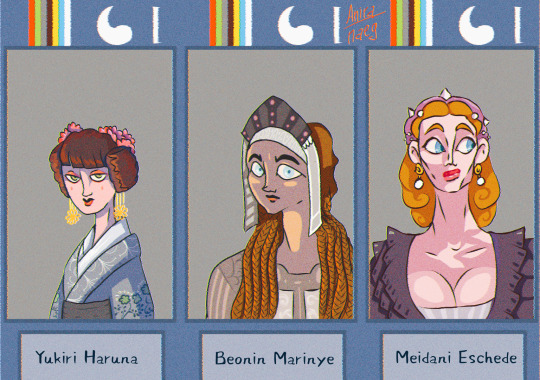

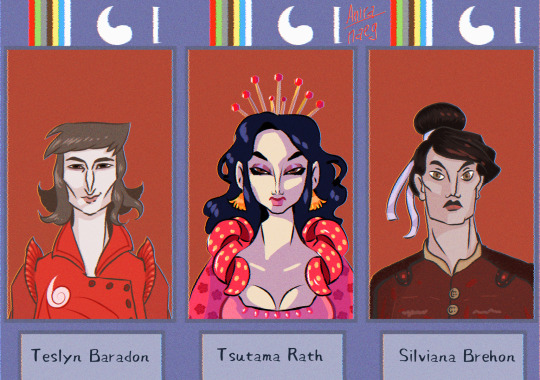
#my art#artwork#art#wheel of time#wot art#wot book spoilers#aes sedai#red ajah#green ajah#gray ajah#teslyn baradon#tsutama rath#silviana brehon#adelorna bastine#myrelle berengari#seonid traighan#yukiri harina#beonin marinye#meidani eshede
115 notes
·
View notes
Text

Priest, Midnight Mass, and Sinner, by Sierra Simone, audiobooks narrated by Jacob Morgan, Elena Wolfe, & Morae Brehon
Story? Fuckit I'm just here for Jacob Morgan and the spice. And both are v v nice 👀
Book reviews: https://rainbowofcrazy.wordpress.com/2025/03/07/book-review-priest-midnight-mass-sinner-by-sierra-simone/
#sierra simone#priest novels#jacob morgan#elena wolfe#morae brehon#priest#midnight mass#sinner#romance books#book review
3 notes
·
View notes
Text
Bechbretha | Brehon Law on Beekeeping
In ancient Ireland, beekeeping was so important that there was a complete list of laws dedicated to beekeeping, called ‘Bechbretha’, during the time of our Brehon laws. In the seventh century AD the laws were written down for the first time. Brehon law was administered by Brehons, or ‘brithem’ derived from the Irish ‘breitheamh’ meaning judge, the successors to Celtic druids. In many respects…
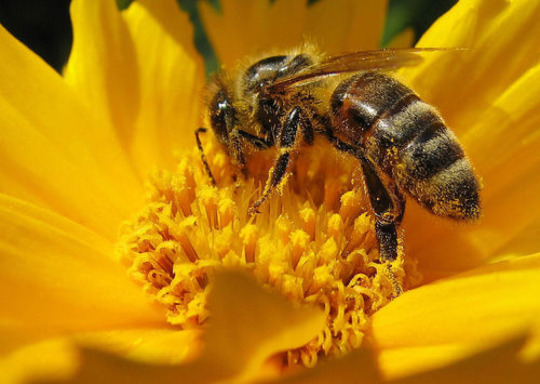
View On WordPress
#Ancient Irish Law#Bechbretha#Bee-keeping#Beekeepers#Brehon Law#Bumbóg#Bumble Bee#England#Honey#Honeycomb#Ireland#Lard#Milk#Nectar#Old Irish Law-tract#Plants#Telling the Bees
20 notes
·
View notes
Note
So I’ve been getting more into broader brehon law, not just marriage law, and is it true they had laws about how many different colors you could wear? I can’t find any sources about it but maybe I’m just not looking hard enough
That comes from one kind of famous (ish?) passage from the Annals, that reads as follows (from the O'Donovan translation):

Do I think it was something people followed? ...probably not, honestly. We don't see much reference to it elsewhere. Not to say there were NO restrictions, but it's to say that I think it's often taken 100% uncritically and you'd think we'd see more reference to it elsewhere, in the actual lawbooks, if that was the case. (Though, naturally, some of it's practical, in the sense that...would a slave be able to have more than one color? Being a slave? Very likely not.) It's the issue with all sumptuary laws, which is "to what extent were these things widely being used?"
To quote from Sparky Booker's "Moustaches, Mantles, and Saffron Shirts: What Motivated Sumptuary Law in Medieval English Ireland?": "In terms of implementation, the success of enforcement of sumptuary laws varied.11 Indeed, historians disagree about whether these laws were intended to be enforced fully, or whether they were 'primarily symbolic,' a method of 'affirm[ing] values' and even actively shaping the social world by enshrining socio-economic divisions in law."
We know that medieval Ireland had a number of colors associated with the aristocracy: purple (like with the rest of Europe) seems to be common, white, red, like in this description from the Táin (Recension 1, O'Rahilly's translation): "He held a light sharp spear which shimmered. He was wrapped in a purple, fringed mantle, with a silver brooch in the mantle over his breast. He wore a white hooded tunic with red insertion and carried outside his garments a golden-hilted sword."
Likewise, the famous description of Etáin in Togail Bruidne Da Derga (Stokes' translation):
"A mantle she had, curly and purple, a beautiful cloak, and in the mantle silvery fringes arranged, and a brooch of fairest gold. A kirtle she wore, long, hooded, hard-smooth, of green silk, with red embroidery of gold. Marvellous clasps of gold and silver in the kirtle on her breasts and her shoulders and spaulds on every side. The sun kept shining upon her, so that the glistening of the gold against the sun from the green silk was manifest to men."
For more on this, see Niamh Whitfield, "Aristocratic Display in Early Medieval Ireland in Fiction and in Fact: The Dazzling White Tunic and Purple Cloak", which she's generously put on Academia.
After the English colonization of Ireland, you have new sumptuary laws being put into place -- Booker discusses the earliest case we have, from 1297, when a hairstyle known as the "cúlán" was banned for Englishmen, with the enactment complaining that the Englishmen were taking it up to such an extent that they were getting killed after being mistaken for Irishmen. (I feel like there is a solution to this that does not involve banning the hairstyle, let me think...)
You had similar fines being imposed on saffron sleeves or kerchiefs for women, or wearing a mantle in general for men, as of 1466 in Dublin -- these aren't as a matter of maintaining social class so much as preserving a distinction between the English and the Irish (what's interesting, of course, is that the English had to have been adopting these fashions to some extent for the law to be needed.) And we see them routinely going back to this aversion towards saffron colors, since it was associated extensively with Ireland and Irishness, and a particularly high value one at that.
So: Eochaidh Eadghaghach -- that section in the annals provides the quote that says that this is a thing that happened -- I leave it to you to decide whether it was ever practiced or even in place in the first place. I think it might have, if only as a societal ideal, but I'm incredibly doubtful. We know that colors often ARE used as a way of marking social standing in the literature, but I don't think it was as regimented as that quote suggests. Sumptuary laws ARE better recorded in a post-Norman invasion context, usually (though not ALWAYS) as a means of marking out the Irish from the English populations (even though we know, both from this and other evidence, that these lines weren't always as firm as the authorities might have liked.)
I know that Kelly also goes into a lot of details re: colors and dyes in his "Early Irish Farming" -- if you're looking to get into the world of day to day life in Ireland, there isn't a better source.
29 notes
·
View notes
Text
Let's (re)Read The Great Hunt! Chapter 23: The Testing
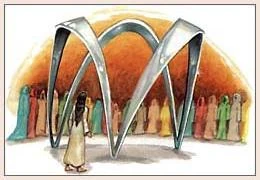
Welcome back to my reread! The way to see spoilers for the whole series, yes that's right not just this book but everything all the way to the end, will come but once. Be steadfast. Or just click wildly, whatever you like. But if you like not being spoiled, don't click below and just keep doomscrolling through tumblr with no hope of escape.
This chapter has the Flame icon because it concerns one of the initiation rites of the White Tower.
Centered under the dome was a thing made of three rounded, silver arches, each just tall enough to walk under, sitting on a thick silver ring with their ends touching each other. Arches and ring were all of one piece.
So what the heck is this thing, one wonders. I've seen people suggest it's a holodeck with the safeties off, though that seems frivolous even by AoL standards since it seems to be connected to genuine mirror worlds. It may be some device meant for observing and experiencing such worlds that has become damaged in some way, causing memory loss. Maybe one of the forgotten Darkfriends of old built it as a bizarre punishment system.
All four Aes Sedai wore their shawls, as Sheriam did; blue-fringed for Sheriam, red for the swarthy woman by the table, green, white, and gray for the three around the arches.
We (a word which here means "the wiki") don't know who most of these ladies are, but apparently the "swarthy woman" is Silviana. Not too sure how we know this exactly (the Companion?) but hey! Hi Silviana! You're delightful.
“The Wheel weaves as the Wheel wills, and when it wills. Patience is a virtue that must be learned, but we must all be ready for the change of an instant.”
Nynaeve was patient really, by waiting at all, and she's more than ready for change. The Tower's usual deliberate refusal to communicate is silly under these circumstances. They could have given her something to do.
Nynaeve shook her head. It sounded either like too much to swear or too little, and she said so.
She's exactly right. The First Oath is too little and easily sidestepped, the others give up far too much utility and helped hinder the institution.
Light, child, I am trying to teach you what any other woman standing where you are would have learned over the course of years.
Honestly Sheriam is pretty good as an undercover Black, giving a huge infodump that's legit and not misleading. And I suppose it's pretty appropriate we transition from Moiraine acknowledging the Black to a big spiel by one.
Once you begin, you must continue to the end. Refuse to go on, and no matter your potential, you will be very kindly put out of the Tower with enough silver to support you for a year, and you will never be allowed back.
Oh look it's another policy that only guarantees the Tower doesn't get the numbers it needs.
Some women have entered, and never come out.
And don't forget that this is a price of the ter'angreal they chose to use. They aren't selecting for great women this way, just the stubborn ones who get lucky.
You may turn back now, right now, and I will put your name in the novice book, and you will have only one mark against you.
Literally the only sensible winnowing process they have! If after three chances a woman still doesn't think she's ready, then unless it's the Tower's teachings itself that failed her (and we don't see evidence that such happens often), it's a good sign that she's not ever going to be ready.
I must make Moiraine pay for what she has done to us. I must.
I'm still sad she never quite gets to act on this. It's such a great motivation.
Nynaeve’s cheeks colored at forgetting already what Sheriam had told her on the way down from her room. Hastily she removed her clothes, her shoes and stockings.
Note that she's not at all ashamed to be naked in front of strangers.
And note that this is the first of many "all ladies must be naked" sequences. Yes there's some historical accuracy here, but you'll note that the Black Tower never picks up such a tradition even under Taim's messed up supervision.
Taking a deep breath, she went on straight, through more passages that all looked exactly alike.
It is the nature of video games, even magic post-apocalyptic ones, that sooner or later someone will reinvent Colossal Cave Adventure.
Dimly, she remembered playing mazes on paper as a child; there had been a trick to finding your way out, but she could not bring it to mind.
There are many tricks to exhausting mazes, though not every trick works for every maze. The simplest and most well known is to pick a wall and follow it. In a maze where both entry and exit are upon the outer perimeter, this is guaranteed to work eventually. On the other hand, if you start in the middle like Nynaeve (or if you want to reach the center from the outside), this might not work. The walls may not all be connected, so you loop around to where you started without ever reaching your destination.
She started to take the left fork . . . and spun around at another glimpse of movement. There was nothing there, but this time she was sure. There had been someone behind her. Was someone.
On a scale of 1 to 10, how pathetic is it that dream Aginor manages to be a more compelling threat than he was in book 1 or books 6 through 9?
“You are a pretty one, girl. I will enjoy you.” Suddenly Nynaeve remembered she wore not a stitch.
While obviously the main threat here is the implication of rape, let's step past that and get into the metaphorical. Nudity isn't the normal state of affairs in the arch worlds, only this one. This is Nynaeve beyond the Two Rivers, in a place where the authority she covers herself with is entirely absent. Aginor isn't just the Forsaken, he's also to a degree everyone she's had to deal with since she's left home - even the Aes Sedai who gleefully relish recruiting such a powerhouse.
“You dare? You dare!” He quivered, and spittle leaked down his chin.
This is honestly a pretty good prep for how scary we should actually think the Forsaken are: not at all.
“You cannot! It cannot be!”
Another reason I think Aginor is as much a stand-in for the Aes Sedai as he is for his allies in this sequence is that protests that Nynaeve can't have done awesome stuff and pointless hostility define their reactions to her.
And she could feel Aginor doing . . . something, as well. Dimly she felt it, and far distant, as if it were something she could never truly know, but around her she saw the effects and knew them for what they were.
Early installment weirdness? Or perhaps one of the tells that this isn't real; the arch isn't really drawing on saidin (or perhaps draws to a lesser extent on both), so Nynaeve has a dim awareness of it now that she's connected.
She looked back at Aginor, just in time to see him crawl out of sight over the mounded stone and disappear. She hissed in frustration.
Finally, and rather disappointingly in contradiction to what I've been saying, the last reason to view Aginor as a stand-in for the Aes Sedai is that to succeed in what she has to do, Nynaeve needs to give up her feud with Moiraine and not worry about what she's up to out of sight.
“You are washed clean of what sin you may have done,” the Aes Sedai intoned, “and of those done against you. You are washed clean of what crime you may have committed, and of those committed against you. You come to us washed clean and pure, in heart and soul.”
See what I mean? No reason to include this if not to say that the Moiraine feud is being wiped clean.
“That isn’t supposed to be possible. You should not even remember being able to channel.”
"Not possible! You dare channel in our sacred space?"
It's really rather a blatant parallel now that I'm seeing it.
She kept her memories, and she channeled the One Power when she was threatened. And she came out with her abilities burned to nothing, unable to channel, unable even to sense the True Source. The second to go in was also warded, and she, too, was destroyed in the same way.
To me it sounds like it's the wards plus channeling that cause problems, not the channeling itself. That's one hell of a vicious anti-cheating mechanism though.
There was more than an air of neglect about it, whitewash faded, a shutter hanging loose, the rotted end of a rafter showing at a gap in the roof tiles.
A final final reason (for real this time?) to consider Aginor a stand-in for the Aes Sedai as much as himself is that otherwise the past/present system doesn't line up. The Forsaken are real, present threats and the Two Rivers isn't exactly, but if Aginor is as much about Nynaeve's fear of the Power (oh shit it's that too) and the Aes Sedai then it makes sense that that's a trial she's already put behind her just by being in the Tower. Abandoning her notions of herself as a Two Rivers woman though, that's a harder struggle. It's not Bran neglecting his inn, it's Nynaeve neglecting the whole of her home.
“If Malena knows you’re here, there will be trouble. I just know Cenn went scurrying off to find her. He’s the Mayor, now.”
Malena's name of course comes from the Latin "malus", meaning "bad" or "evil".
She beat Alsbet all around the Green with a stick, and none of us who saw had the nerve to try to stop it.
Nice try, silver arches! There's no possible Mirror World where the Two Rivers folk would watch the blacksmith's wife get beat up and not immediately tear the aggressor to shreds.
She said that was why they died; the Light abandoned them. She talks about sin all the time.
Sin doesn't really get brought up a whole bunch in this universe. Like obviously becoming a Darkfriend is sinning and the Whitecloaks claim all sorts of stuff is tantamount to being a Darkfriend, but it's not as if more mundane behavior gets this description usually. Yet in this chapter the Aes Sedai mention it without and Malena worries about it within. Is she yet another reflection of Nynaeve's fear of the Aes Sedai? Destroying families, marking men with the Dragon... It's not too far off from how Nynaeve sees Moiraine, is it?
If she can’t make you afraid of her, she makes you think you need her for the children.
Is this how Nynaeve internally views her discussion with Moiraine after Shadar Logoth? Moiraine couldn't make Nynaeve be afraid of her but she could make her worry about Egwene and the boys even though she was the reason Nynaeve worried about them at all.
The way back—No! These are my people!
Not anymore. :(
“We have to run. We have to hide. Nynaeve, come on. Cenn will have told her who you are. She hates anyone even to speak of you.”
Does Nynaeve think Moiraine doesn't much like Lan speaking of her, I wonder.
“You are washed clean of false pride. You are washed clean of false ambition. You come to us washed clean, in heart and soul.”
Nynaeve's not a Wisdom anymore. It wasn't her real path.
The third is the worst. “I’m afraid,” she whispered. What could be worse than what I just did?
Having to walk away from the happy ending already won for you.
The city had a thousand gardens, but she preferred this wild garden on the hilltop.
Because a garden growing by itself in what was so recently the Blight feels more wonderous than those maintained by human hands?
“Go back? Where? To Emond’s Field? If you wish it. I’ll send letters to Morgase, and command an escort.”
Morgase of course won't be queen at this point. I wonder what reason besides dramatic necessity causes the arches to get a few things wrong.
To her horror, she found herself remembering him as her husband, remembering laughter and tears, bitter arguments and sweet making up. They were dim memories, but she could feel them growing stronger, warmer.
Did some fools in the AoL think that the Dark One's reach was limited purely to their timeline? Did they build this device in the hopes of finding a place beyond his touch, that would let them forget the horrors of the Shadow and recall all the sweet memories in its place instead?
I could stay here. With Lan. Nothing has changed. Her thoughts turned. Nothing has changed. Egwene is alone in the White Tower. Rand will channel the Power and go mad. And what of Mat and Perrin? Can they take back any shred of their lives? And Moiraine, who tore all our lives apart, still walks free.
It says a great deal about Nynaeve's character that the thing that gets her out of this gilded cage is her love for the others.
And also, I do so love ironic echoes, even if they're only separated by a single sentence.
She tried to picture the arch in her mind, to shape it and form it to the last detail, curve of gleaming metal filled with a glow like snowy fire. It seemed to waver there, in front of her, first there between her and the trees, then not, then there.
Perhaps this is just an ordinary entertainment device. Perhaps you forget for the immersive experience and then the arch is meant to be a primer to remind you of what you're supposed to call back to you. It seems unlikely that only Nynaeve would have this capability, after all. Presumably others should have been able to call the archway back, if only they'd known how.
Child, almost every woman who does this says much the same thing. It is no small thing to be made to face your fears.
It's no wonder so many women go Black, with trauma being such a central part of their identities as sisters. And the arches were only found after the Trolloc Wars, when the corruption began in earnest...
A gift from Ishamael?
“There shouldn’t be any scarring. And how did you only get two, and both placed so precisely? If you tangled yourself in a blackthorn bush, you should be covered with scratches and thorns.”
If scarring yourself permanently is part of the exit conditions, I could definitely see this being something Ishamael specifically devised. Not from scratch of course, he's not an engineer, but a relic he deliberately tampered with, setting admin access at a high price. There is always a price.
The Amyrlin’s eyes seemed to hold a dark glow. Nynaeve’s shiver had nothing to do with being naked and wet.
Yeah, this really only cements the Aginor thing. Too late now to escape, Nynaeve! You've committed.
Next time: A whole bunch of characters from book 1 come back. Some of them plan on being important this book, and others are only flirting with importance for the next three or twelve.
#let's read#wheel of time#wot#robert jordan#rand al'thor#wheel of time spoilers#wot spoilers#nynaeve al'meara#sheriam bayanar#silviana brehon#aginor#cenn buie#marin al'vere#lan mandragoran#siuan sanche
23 notes
·
View notes
Text
it's days like today i think about Aoife MacMurrough
#i am so convinced she had no real say in the marriage#regardless of what brehon law claimed like that stuff could be so easily bent and twisted
3 notes
·
View notes
Text
which one of you shared that thing about St. Gobnait last year and her possible connection with the Brehon Law tract about beekeeping? I ran my mouth and now someone is asking for sources and I can't find it ugh
0 notes
Photo

Saint Patrick (5th century) is the best-known patron saint of Ireland and one of the most successful Christian missionaries in history. He is credited with expanding literacy in Ireland through the monastic orders he established, revising and codifying the Brehon Laws, and converting the country to Christianity. He was a Roman citizen of Britain (known as Patricius) who was captured by pirates at the age of sixteen and sold into slavery in Ireland. He escaped back to Britain, became ordained as a bishop, and returned to the land of his captivity as a missionary in c. 432/433. He was not the first Christian missionary to Ireland but is the most famous. His influence on the laws and culture of Ireland was enormous as he championed the causes of women, the poor, and slaves while conferring with kings and nobles. His death date is celebrated on 17 March but the year he died, as with his year of birth, is unknown. He is one of three patron saints of Ireland along with St. Brigid and St. Columba.
127 notes
·
View notes
Text
every so often i do get people asking for books recommendations for getting into irish mythology (just answered an ask privately about it.. at length) and this one deserves to be in a public post but seriously read The Táin (translated by Thomas Kinsella). This is THE best book and best translation. it's a fascinating look into life under Brehon Law, especially where female characters are concerned - i'm not saying it's not sexist but it's not the sexism you expect from a prechristian story put to writing by monks in the middle ages. this is why you need the Kinsella translation, earlier Victorian translations heavily censored 'unseemly' topics, like expressions of womens' sexual desire (which is almost constant in this book i'm ngl the girls are getting it. cúchulainn's wife emer refuses to marry him until he kills 900 men for her and of course our hero kills 900 men for her what is he, a bad husband??)
but also it's just a good story and extremely funny. it's something a lot of recommendations never really express - it is a story with a sense of humour and you will laugh. it's designed to entertain people around a fire during black winter nights.
it's a written version of the Ulster Cycle, a series of intertwined stories about our best boy Cúchulainn becoming the sole defender of Ulster after all the other men are cursed to experience debilitating period cramps by Macha. He has to defend Ulster because the queen of Connacht is coming to steal a bull belonging to them, and she's doing that because she got in a fight with her consort* over who's the richest and found that their wealth was exactly equal aside from him having a nicer bull. so she goes to war to get her own awesome bull.
best book ever. read it
#*in the podcast candlelit tales' retelling of the Táin (also recommended) they give him a thick blackrock accent and it's just so#like. there's layers there. oh god there's layers
137 notes
·
View notes
Note
Where would the line of succession go if Aífe/Flannán didn't have an heir? What are the succession laws for the other world?
This is a little situational! At the moment, if Flannán were to die suddenly, it is quite possible the "Unseelie" as a distinct nation state would quickly cease to be, as they would be vulnerable to the Seelie swooping in to reclaim the lost territory while they have the opportunity to do so. That said! In terms of the technical process of selecting a new monarch, it may surprise you to learn it would come down to a vote! Not from the "common" people, mind you, but among the regional lords of the Seelie/Unseelie sides. Eligible persons for the throne would make their cases for why they ought to rule instead, and the candidate with the most support would be the next monarch. Typically candidates consisted of other lords who could claim shared ancestry with the previous monarch, but in the Unseelie's case, since both Lugaid and Flannán were common born and their ancestries were not tracked, the election would be dubiously open to all lords, or close confidants like Maeve who command the people's respect. This is how Aífe became queen, actually! Of course, the fact she was chosen by Lia Fáil (the ancient coronation stone) also helped her case.
If you're wondering, this system does have a basis in Brehon law (ancient Irish law), specifically under a system called tanistry. The Tuatha Dé's current system is not quite the same as the historic system, though: After the Tuatha Dé were defeated by the Milesians, many of the ancient laws were revisited/revised to encourage stability (submission to a central state power) and thereby clamp down on territory grabs, cattle raids, etc. between lords (or, then, petty kings). In any case, one change to the law was establishing a line of succession based on age and the familial relation, with direct descendants preferred over brothers or sisters, etc. Voting in a new monarch is now more or less a "final resort".


27 notes
·
View notes
Text
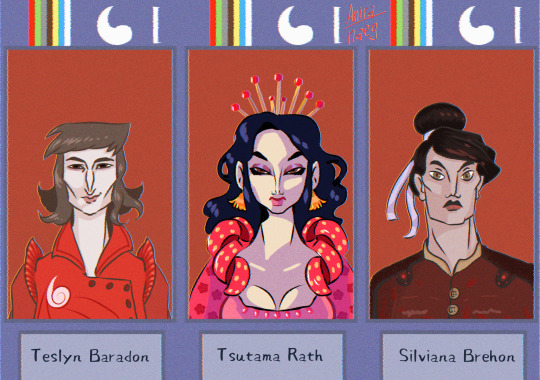
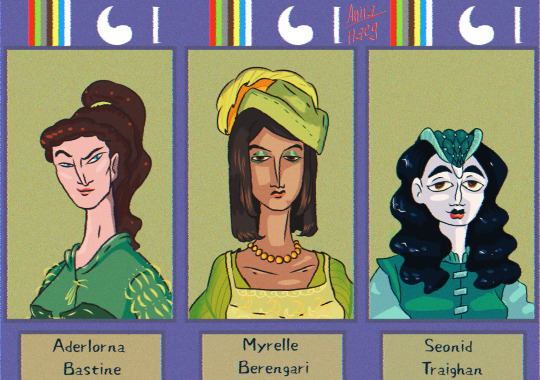
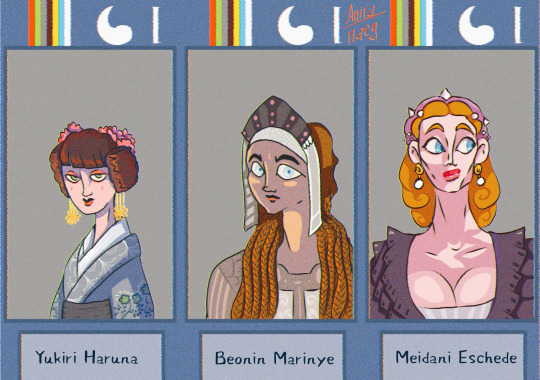

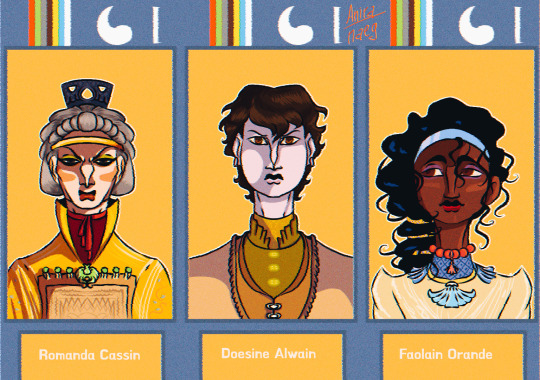
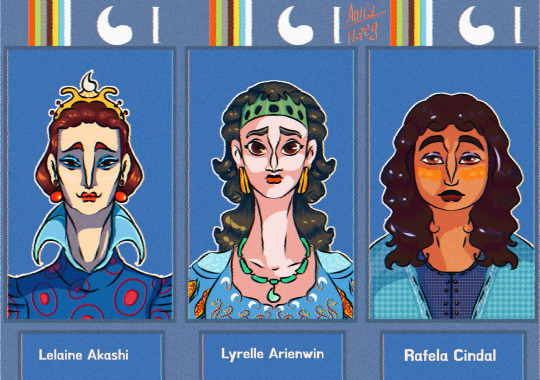
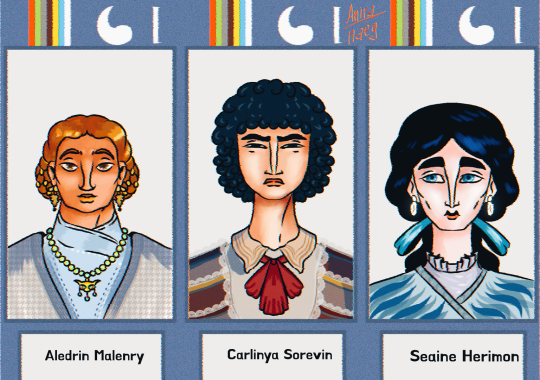
I spent a month of my life on this, so I kindly ask you to give an opinion about my work
#my art#artwork#art#wheel of time#wot art#wot book spoilers#aes sedai#red ajah#green ajah#gray ajah#brown ajah#yellow ajah#blue ajah#white ajah#teslyn baradon#tsutama rath#silviana brehon#adelorna bastine#myrelle berengari#seonid traighan#yukiri haruna#beonin marinye#meidani eshede#adeleas namele#saerin asnobar#zemaille amassa#romanda cassin#doesine alwain#faolain orande#lelaine akashi
83 notes
·
View notes
Text
A tidbit I stumbled upon while researching Gaelic/Gaelicized Ireland is that society in those parts of the country was FAR more lenient when it came to marriage, extra-marital relationships and bastardy. To the point that bastards were treated as equals to legitimate children re: inheritance as long as paternity was clear, at least in places where brehon law was used.
And I just played through a party where Gunther Goth (lord of Glennborough) and Mariora kept trying to flirt autonomously and became friends super quickly.
And on the one hand, I'm like
"Mariora wouldn't do that, she is still deeply in love with Simon and his ghost is still hanging around!!"
But on the other one
Her having a child with a Goth that could inherit the lordship should Mortimer & Bella's line die out would be really fucking funny.
And it could just be an arrangement for mutual convenience, e.g. he offers to set her and her family up in a nicer house and with a pension or something if she gives him another son (because he and Cornelia only have Mortimer).
Thoughts?
8 notes
·
View notes









